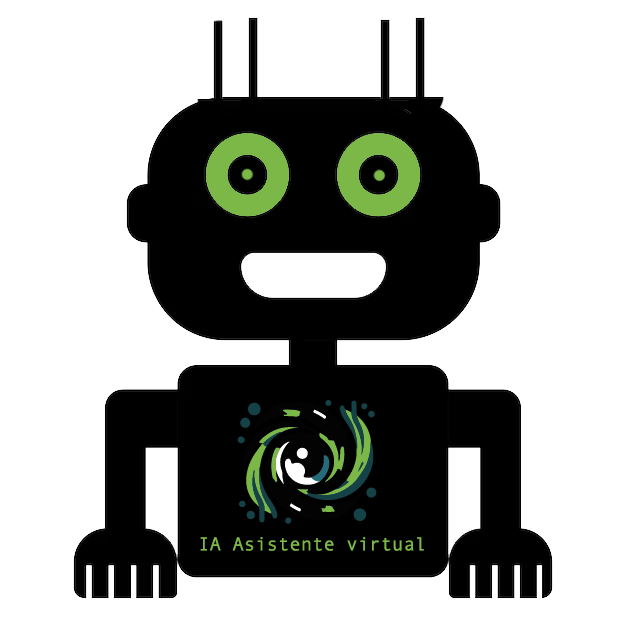Redes Sociales, Desarrollo Socioemocional y Aislamiento Social en Adolescentes
Una Revisión Sistemática
DOI:
https://doi.org/10.62161/revvisual.v17.5926Palabras clave:
Adolescencia, Redes Sociales, Educación, Aislamiento social, Desarrollo socioemocionalResumen
La pandemia de COVID-19 ha provocado un gran impacto en el desarrollo emocional y social de los adolescentes, constituyendo las redes sociales una herramienta esencial para construir su identidad. El objetivo de este artículo es realizar una revisión sistemática enfocada en el impacto de las redes sociales en el desarrollo socioemocional de los adolescentes, poniendo especial atención en los sentimientos de aislamiento social. Los resultados destacan el papel de las redes sociales como herramientas para alimentar los sentimientos de pertenencia. Como principales conclusiones se menciona la importancia de promover un buen uso de las redes sociales como espacio de crecimiento emocional.
Descargas
Estadísticas globales ℹ️
|
449
Visualizaciones
|
268
Descargas
|
|
717
Total
|
|
Citas
Baker, R.K. & White, K.M. (2010). Predicting adolescents’ use of social networking sites from an extended theory of planned behaviour perspective. Computers in Human Behavior , 26 (6), 1591-1597. DOI: https://doi.org/10.1016/j.chb.2010.06.006
Barker, V. (2009). Older adolescents' motivations for social network site use: the influence of gender, group identity, and collective self-esteem. Cyberpsychology & behavior , 12 (2), 209-213. DOI: https://doi.org/10.1089/cpb.2008.0228
Best, P., Manktelow, R. & Taylor, B. (2014). Online communication, social media and adolescent wellbeing: A systematic narrative review. Children and Youth Services Review , 41 , 27-36. DOI: https://doi.org/10.1016/j.childyouth.2014.03.001
Boyd, D. M., & Ellison, N. B. (2007). Social network sites: Definition, history, and scholarship. Journal of computer‐mediated Communication, 13(1), 210-230 DOI: https://doi.org/10.1111/j.1083-6101.2007.00393.x
Breuer, L., & Barker, C. (2015). Online support groups for depression: Benefits and barriers. Sage Open, 5(2), 2158244015574936. DOI: https://doi.org/10.1177/2158244015574936
Carr, C.T., y Hayes, R.A. (2015). Social Media: Defining, Developing, and Divining. Revista atlántica de comunicación , 23 (1), 46-65 DOI: https://doi.org/10.1080/15456870.2015.972282
Charmaraman, L., Richer, A.M, Liu, C., Lynch, A.D., & Moreno, M.A.(2021). Early Adolescent Social Media-Related Body Dissatisfaction: Associations with Depressive Symptoms, Social Anxiety, Peers, and Celebrities. J Dev Behav Pediatr, 42(5):401-407. doi: 10.1097/DBP.0000000000000911 DOI: https://doi.org/10.1097/DBP.0000000000000911
Ciacchini, R., Orrù, G., Cucurnia, E., Sabbatini, S., Scafuto, F., Lazzarelli, A., Miccoli, M., Gemignani, A., & Conversano, C. (2023). Social Media in Adolescents: A Retrospective Correlational Study on Addiction. Children,10(2):278. https://doi.org/10.3390/children10020278 DOI: https://doi.org/10.3390/children10020278
Cipolletta, S., Malighetti, C., Cenedese, C., & Spoto, A. (2020).How Can Adolescents Benefit from the Use of Social Networks? The iGeneration on Instagram. International Journal of Environmental Research and Public Health,17(19):6952. https://doi.org/10.3390/ijerph17196952 DOI: https://doi.org/10.3390/ijerph17196952
Dahl, R.E., Allen, N.B., Wilbrecht, L., & Suleiman, A.B. (2018). Importance of investing in adolescence from a developmental science perspective. Nature, 554(7693), 441–450. 10.1038/nature2577 DOI: https://doi.org/10.1038/nature25770
Domokos, C., Domokos, M., Mirică, S. N., Negrea, C., Bota, E., & Nagel, A. (2020). Being a student at the faculty of sports and physical education in COVID-19 pandemic times – a moment in life. Timişoara Physical Education and Rehabilitation Journal, 13(24), 45–50. https://doi.org/10.2478/tperj-2020-0007 DOI: https://doi.org/10.2478/tperj-2020-0007
Ellison, N.B., Steinfield, C., & Lampe, C. (2007). The benefits of Facebook “friends:” Social capital and college students’ use of online social network sites. Journal of computer‐mediated communication, 12(4), 1143-1168. DOI: https://doi.org/10.1111/j.1083-6101.2007.00367.x
Fumagalli, E., Dolmatzian, M.B., & Shrum, L.J. (2021) Centennials, FOMO, and Loneliness: An Investigation of the Impact of Social Networking and Messaging/VoIP Apps Usage During the Initial Stage of the Coronavirus Pandemic. Front. Psychol. 12:620739. doi: 10.3389/fpsyg.2021.620739 DOI: https://doi.org/10.3389/fpsyg.2021.620739
Hargreaves, D.A., & Tiggemann, M. (2004). Idealized media images and adolescent body image: "Comparing" boys and girls.. Body image , 1 (4), 351-361. DOI: https://doi.org/10.1016/j.bodyim.2004.10.002
Hemberg, J., Sundqvist, A., Korzhina, Y., Östman, L., Gylfe, S., Gädda, F., & Nyman-Kurkiala, P. (2024). Being young in times of uncertainty and isolation: adolescents’ experiences of well-being, health and loneliness during the COVID-19 pandemic. Revista Internacional de Adolescencia y Juventud, 29(1). https://doi.org/10.1080/02673843.2024.2302102 DOI: https://doi.org/10.1080/02673843.2024.2302102
Juvonen, J., & Gross, EF (2008). Extending the school grounds?--Bullying experiences in cyberspace. Journal of School health , 78 (9), 496-505. DOI: https://doi.org/10.1111/j.1746-1561.2008.00335.x
Kim, E., Lee, J.A., Sung, Y., & Choi, S.M. (2016). Predicting selfie-posting behavior on social networking sites: An extension of theory of planned behavior. Computers in Human Behavior , 62 , 116-123. DOI: https://doi.org/10.1016/j.chb.2016.03.078
Kowalski, R. M., Limber, S. P., & McCord, A. (2019). A developmental approach to cyberbullying: Prevalence and protective factors. Aggression and violent behavior, 45, 20-32. DOI: https://doi.org/10.1016/j.avb.2018.02.009
Laursen, B., & Hartl, A. C. (2013). Understanding loneliness during adolescence: Developmental changes that increase the risk of perceived social isolation. Journal of Adolescence, 36(6), 1261–1268. DOI: https://doi.org/10.1016/j.adolescence.2013.06.003
Lawrence, D., Hunter, S.C., & Cunneen, R. (2022). Reciprocal Relationships between Trajectories of Loneliness and Screen Media Use during Adolescence. J Child Fam Stud 31, 1306–1317 https://doi.org/10.1007/s10826-021-02066-3 DOI: https://doi.org/10.1007/s10826-021-02066-3
Lee, J. (2020). Mental health effects of school closures during COVID-19. The Lancet Child & Adolescent Health, 4(6), 421. https://doi.org/10.1016/S2352-4642(20)30109-7 DOI: https://doi.org/10.1016/S2352-4642(20)30109-7
Locati, F., Milesi, A., Conte, F., Campbell, C., Fonagy, P., Ensink, K. & Parolin, L. (2022). Adolescencia en confinamiento: el papel protector de la mentalización y la confianza epistémica. Revista de Medicina Clínica Psicología, 79, 969–984. https://doi.org/10.1002/jclp.23453984 DOI: https://doi.org/10.1002/jclp.23453
Magis-Weinberg, L., Gys, C.L., Berger, E.L., Domoff, S.E. & Dahl, R.E. (2021).Positive and Negative Online Experiences and Loneliness in Peruvian Adolescents During the COVID-19 Lockdown. J Res Adolesc, 31(3):717-733. doi: 10.1111/jora.12666 DOI: https://doi.org/10.1111/jora.12666
Nelson, E. E., Jarcho, J. M., & Guyer, A. E. (2016). Social re-orientation and brain development: an expanded and updated view. Dev. Cogn. Neurosci. 17, 118–127. doi: 10.1016/j.dcn.2015.12.008 DOI: https://doi.org/10.1016/j.dcn.2015.12.008
Norcia, A.D., Mascaró, C., Bianchi, D. et al. (2023). Adolescent psychological well-being during the COVID-19 lockdown: the role of leisure activities and online peer communication. Curr Psychol 42, 28038–28047 https://doi.org/10.1007/s12144-022-03679-7 DOI: https://doi.org/10.1007/s12144-022-03679-7
Orben, A. , Tomova, L. , & Blakemore, S.J. (2020). The effects of social deprivation on adolescent development and mental health. The Lancet Child & Adolescent Health, 4(8), 634–640. 10.1016/S2352-4642(20)30186-3 DOI: https://doi.org/10.1016/S2352-4642(20)30186-3
Pickett, C. L., Gardner, W. L., Williams, K. D., Forgas, J. P., & Von Hippel, W. (2005). The social outcast: Ostracism, social exclusion, rejection, and bullying. Psychology Press
Prescott, J., Rathbone, A. L., & Brown, G. (2020). Online peer to peer support: Qualitative analysis of UK and US open mental health Facebook groups. Digital Health, 6, 20552076209792 DOI: https://doi.org/10.1177/2055207620979209
Qualter, P., Vanhalst, J., Harris, R., Van Roekel, E., Lodder, G., Bangee, M., & Verhagen, M. (2015). Loneliness across the life span. Perspectives on Psychological Science, 10(2), 250–264. https://doi.org/10.1177/1745691615568999. DOI: https://doi.org/10.1177/1745691615568999
Rokach, A. (2011). From loneliness to belonging: a review. Psychology Journal, 8(2), 70–81.
Salomon, I., & Brown, CS (2019). The selfie generation: Examining the relationship between social media use and early adolescent body image. The Journal of Early Adolescence , 39 (4), 539-560. DOI: https://doi.org/10.1177/0272431618770809
Tardivo, G., & Díaz Cano, E. (2023). Jóvenes y adolescentes ante el abuso de las TIC: el Covid-19 y los efectos del aislamiento social forzado. RIPS: Revista de Investigaciones Políticas y Sociológicas, 22(2). https://doi.org/10.15304/rips.22.2.9385 DOI: https://doi.org/10.15304/rips.22.2.9385
Towner, E., Tomova, L., Ladensack, D., Chu, K., & Callaghan, B. (2022). Virtual social interaction and loneliness among emerging adults amid the COVID-19 pandemic. Current Research in Ecological and Social Psychology, 3, Article 100058. https://doi.org/10.1016/j.cresp.2022.100058 DOI: https://doi.org/10.1016/j.cresp.2022.100058
Valkenburg, P.M., Koutamanis, M., & Vossen, H.G. (2017). The concurrent and longitudinal relationships between adolescents' use of social network sites and their social self-esteem. Computers in human behavior , 76 , 35-41. DOI: https://doi.org/10.1016/j.chb.2017.07.008
Van den Bos, W. (2013). Neural mechanisms of social reorientation across adolescence. J. Neurosci. 33, 13581–13582. doi: 10.1523/JNEUROSCI.2667-13.2013 DOI: https://doi.org/10.1523/JNEUROSCI.2667-13.2013
Whitty, M. T. (2008). Liberating or debilitating? An examination of romantic relationships, sexual relationships and friendships on the Net. Computers in Human Behavior, 24(5), 1837-1850. DOI: https://doi.org/10.1016/j.chb.2008.02.009
Descargas
Publicado
Cómo citar
Número
Sección
Licencia
Derechos de autor 2025 Los autores/as conservan los derechos de autor y ceden a la revista el derecho de la primera publicación y el derecho de edición

Esta obra está bajo una licencia internacional Creative Commons Atribución-SinDerivadas 4.0.
Los autores/as que publiquen en esta revista aceptan las siguientes condiciones:
- Los autores/as conservan los derechos de autor.
- Los autores/as ceden a la revista el derecho de la primera publicación. La revista también posee los derechos de edición.
- Todos los contenidos publicados se regulan mediante una Licencia Atribución/Reconocimiento-SinDerivados 4.0 Internacional. Acceda a la versión informativa y texto legal de la licencia. En virtud de ello, se permite a terceros utilizar lo publicado siempre que mencionen la autoría del trabajo y a la primera publicación en esta revista. Si transforma el material, no podrá distribuir el trabajo modificado.
- Los autores/as pueden realizar otros acuerdos contractuales independientes y adicionales para la distribución no exclusiva de la versión del artículo publicado en esta revista (p. ej., incluirlo en un repositorio institucional o publicarlo en un libro) siempre que indiquen claramente que el trabajo se publicó por primera vez en esta revista.
- Se permite y recomienda a los autores/as a publicar su trabajo en Internet (por ejemplo en páginas institucionales o personales), una vez publicado en la revista y citando a la misma ya que puede conducir a intercambios productivos y a una mayor y más rápida difusión del trabajo publicado (vea The Effect of Open Access).













